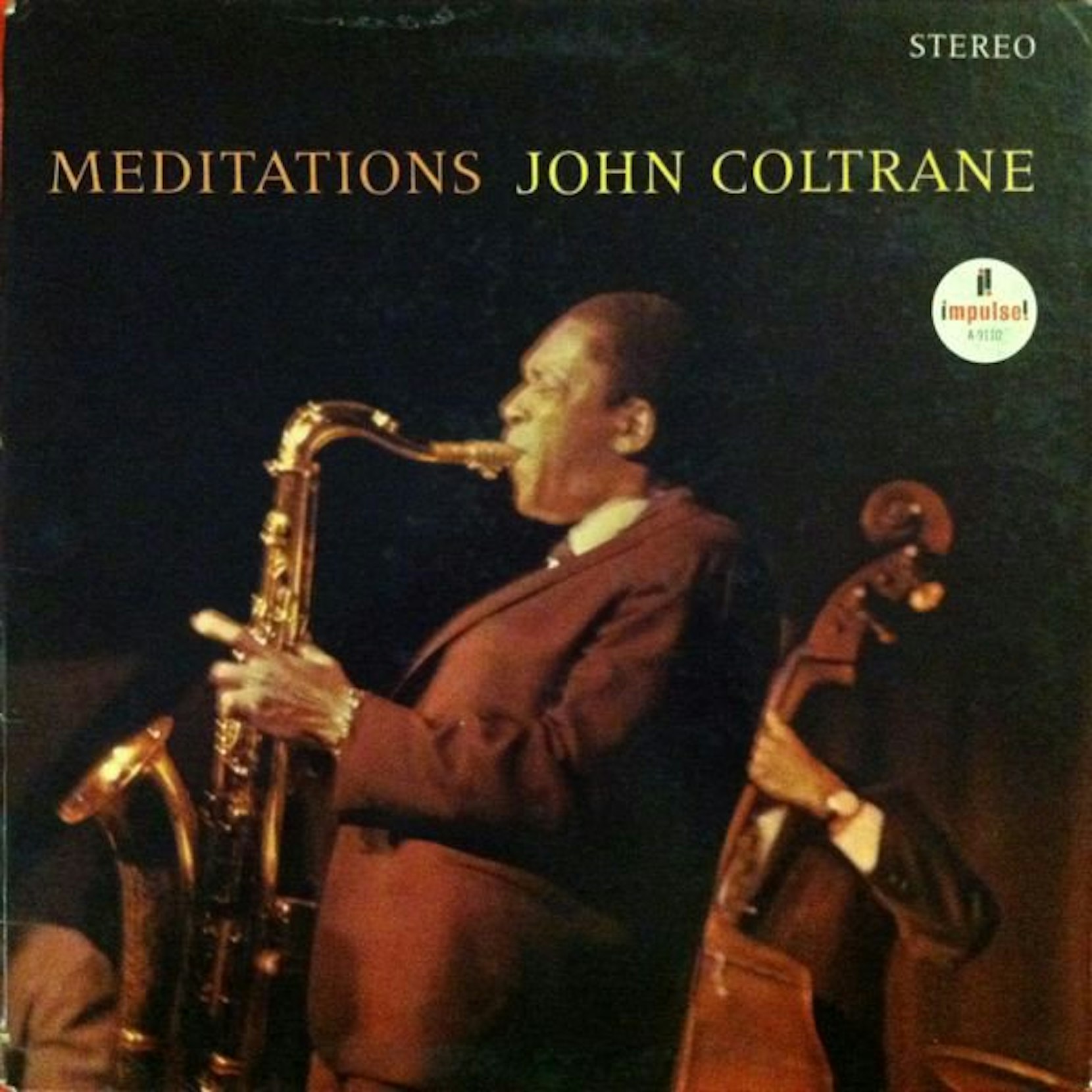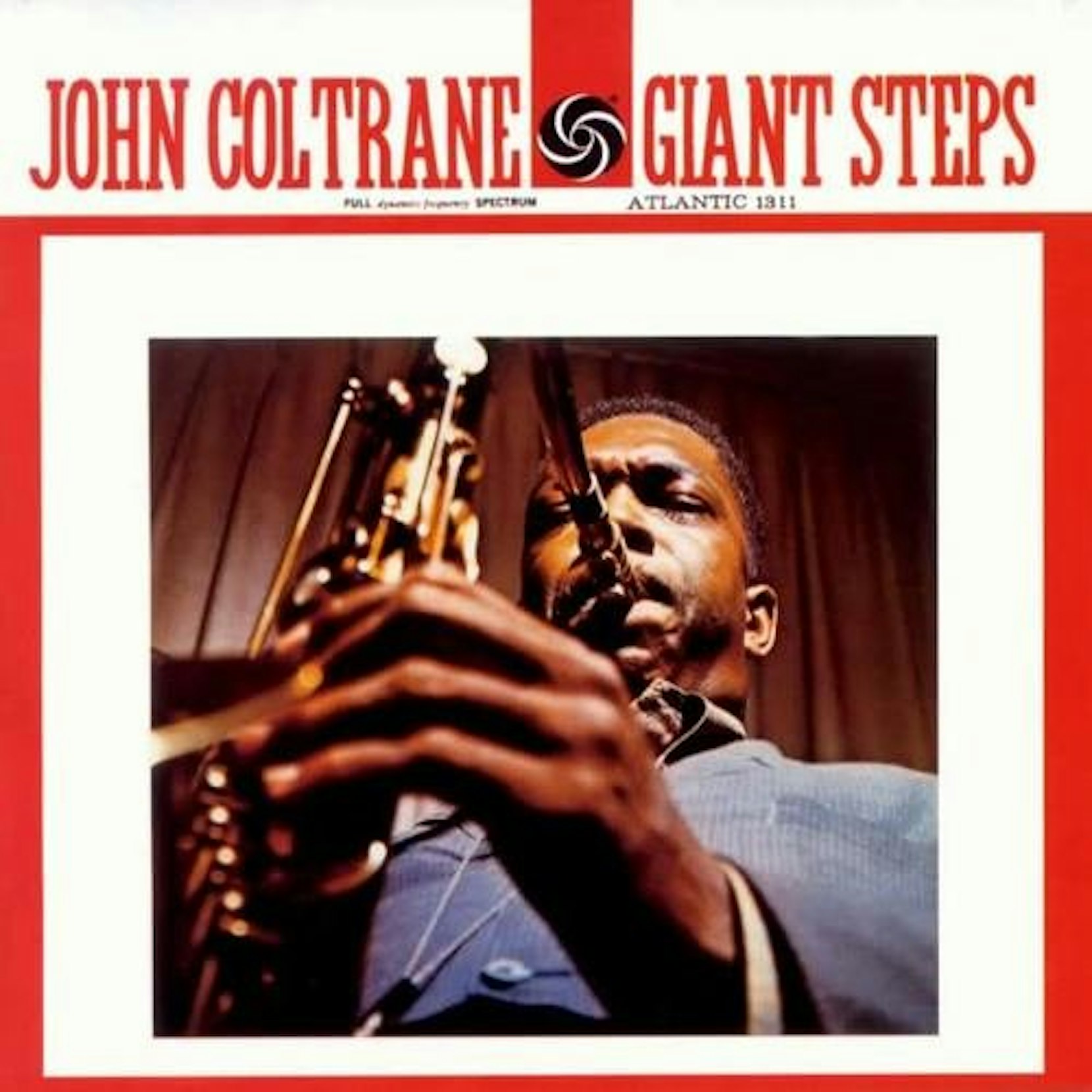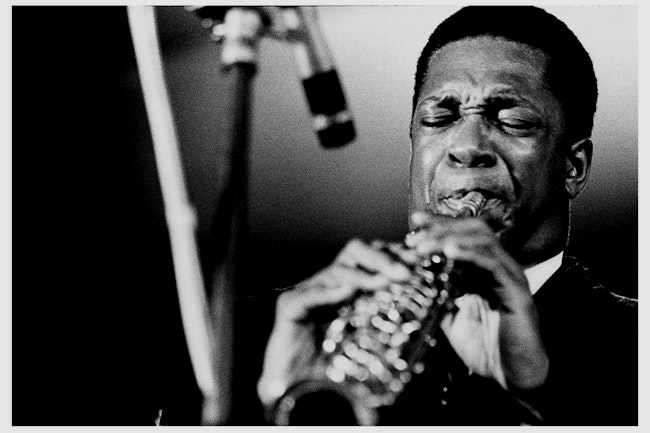The 10 Best John Coltrane Albums To Own On Vinyl
The 10 Best John Coltrane Albums To Own On Vinyl
Where does one begin when writing about an artist on the level of John Coltrane? Do you write about his unbelievable influence as the father of spiritual jazz, the sub-genre in which so many fantastic records reside? Or do you talk about the journey that brought him there, one of addiction, recovery, and finding himself in spirituality? Or do you simply say, hey, this man was one of the greatest artists, of any genre, to live on this planet?
I’m inclined to go with the last statement. It’s not just that Coltrane personally welcomed me into a world of music that had previously only intimidated me. There are plenty of other gateway artists for jazz, and perhaps even too many to name. If it hits you the right way, Coltrane’s music just sticks to your brain, never allowing you to forget bits and pieces of his work much like you’ll always remember the hook of certain pop songs.
Unlike manufactured tunes made for radio (no shots, I love some of ‘em, too), properly digesting the work of John Coltrane does require some work. But on that note, I’d like to share this quote from Coltrane himself, as part of this discussion shared by Blank On Blank, because I think it’s important to keep in mind when listening to jazz:
“If there’s something you don’t understand, you have to go humbly to it. You don’t go to school and sit down and say I know what you’re getting ready to teach me, you know? You sit there and you learn. You open your mind. you absorb. You’ve got to be quiet, you’ve got to be still to do this.”
Before moving on to our list of Trane’s best 10 albums to own on vinyl, it’s worth noting that we already covered perhaps his most essential record, A Love Supreme, in our first jazz primer. So, yeah, we didn’t want to cover the same ground here. Lucky enough for us (and anyone interested in his music), the man has plenty of other material to study and adore. And yes, I’ve once again worked with my friend/jazz musician, Ryan Kowal, on this list. Dig it.

Blue Train
AM: Everyone has those albums they have listened to a million times (give or take) without getting sick of it. For me, it’s Blue Train, which has essentially become one with the music player in our kitchen. If we’re cooking, cleaning, reading, basically doing anything but watching TV in that area, the system’s on — and it’s very likely the earworm of Blue Train’s opening/title track will sound off. This record is addictive in its accessibility. You can play it in the background, catch a melody, and groove with Coltrane and his players; or you can really sit with the record and get absolutely drunk on it. There’s so much soul and body to these tracks that you won’t even realize it’s nearly 45 minutes later once the band wraps up “Lazy Bird” like they’re playing in your living room. And if you’re feeling Blue Train, I highly recommend checking out Coltrane Plays the Blues, too. I love that damn album, too.
RK: Philly Joe’s two-step on the title track always gets me, the whole feel and momentum for the piece change instantly. His commitment is commendable as well. During Curtis Fuller’s solo, the band doesn’t join in on the double-time feel, but he stays with it and builds the tension, which releases to end the solo. Oh, and every other track on this album is a classic, too.

Coltrane Jazz
AM: From athletes to musicians, the truly great artist of any medium always make it look (or in this case, sound) easy. And that’s the feeling you get while listening to Coltrane Jazz, which features some of his more straight-ahead work (especially as it pertains to this list). At least, that’s the way it sounds to someone like me or anyone else who’s never properly studied or played music. When you’ve jumped into Coltrane’s more difficult and experimental records, something like this comes across as easier to digest — and that’s OK! For one, it’s definitely some of his “easier” work when it comes to the listening experience, but it’s also some of his best. Because, as mentioned, this is the definition of a master at work and making what was actually quite difficult sound so natural. If you’re looking for a good entry point for Coltrane, this is it.
RK: The tone, feel, and improvisation style that Coltrane achieves on this album is something that saxophonists are emulating to this day, more than 50 years after its release. That being said, Mr. PC (Paul Chambers) is the unsung hero of this album. He holds down the low end with such a large sense of command, groove, and sophistication.

Live! At The Village Vanguard
AM: Since 1957, the Village Vanguard in New York’s Greenwich Village has showcased more monumental moments in jazz music than, well, any other venue. With that in mind, of course Coltrane graced the stage (numerous times) and blew the audience’s collective mind. In this particular case, Live! went down in November 1961 and served as the first live album in his then somewhat-modest catalog. There’s so much to say about this recording, but I’ll tone it down so as not to ramble. What I absolutely love here is the decision to sandwich a swingin’ cover of “Softly, As In A Morning Sunrise” in between two Coltrane originals, the contemplative “Spiritual” and blistering “Chasin’ The Trane.” What you’re left with is a perfect display of just how versatile and talented this man was, whether he was tickling your nostalgia bone with a cover or going off the rails on his “Trane” solo.
RK: I can’t even imagine what it would have been like to sit in that small room and hear “Chasin’ the Trane” live. The trio setting allows Coltrane to stretch and bend in so many directions. Even though the other tracks are astounding, “Chasin’” catapults this album to another level.

Meditations
AM: When Meditations opens with the pure and seemingly unhinged madness of “The Father and The Son and The Holy Ghost,” it can feel like you’re getting in over your head. And to be sure, Coltrane and his famed quartet — plus drummer Rashied Ali and tenor saxophonist Pharoah Sanders — are pummeling your eardrums on this first track. But it’s in surrendering to the chaos that you’ll hear the brilliance bleeding through the waves of instrumentation, some of which sound like wild animals. Tracks like “Compassion” and “Love” tone down the noise for something more easy to engage with, while the aptly titled “Serenity” closes the project on a rather lovely note. Sure, there are returns to the blasts of “The Father…” especially on “Consequences,” but don’t let the mayhem fool you. There’s more to Meditations than its sonic pandemonium.
RK: This album stacks flawlessly constructed layers of sound on top of one another until an exquisite final track is achieved. On “Love,” by the time piano joins the mix, the listener is wrapped up in one of the most beautifully complex musical stews ever created. I love the fact that “Consequences” breaks down into chaos after this point; perhaps as a statement of the fragility of… On second thought, I am not going to try to analyze what Coltrane was thinking. Everyone needs to listen for themselves and interpret their own meaning.

Olé Coltrane
AM: The story goes that the Trane was inspired to include tinges of Spanish music into his own work, particularly Olé Coltrane, after his former boss did the same a year prior. That would be none other than Miles Davis, who in 1960 released the rather remarkable Sketches of Spain (seriously, listen to it) and who had then recently split with Coltrane. However the influence came about, it’s really only apparent on “Olé” itself, a sprawling 18-minute romp featuring hints of Spanish folk song “El Vito.” When you flip over to Side Two, you’re hit with back-to-back tunes inspired by African tunes, though not quite as much as you’ll hear on other records on this list. What you’re left with is a sonically rich, engaging record that showcases Coltrane’s early trips into more experimental territory.
RK: The intensity that builds within the title track is extraterrestrial. McCoy Tyner’s comping under the soprano solo has so much force behind its repetition that not only does keep your attention, it hypnotizes you to a meditative state of pure musical bliss. The density of the piano makes it possible for the bass to solo over the head out — and it was all recorded two days after Africa/Brass.

Sun Ship
AM: While we had to leave out A Love Supreme to avoid repetition, we’re at least able to recognize the quartet that played on that landmark album. Why? Because they also absolutely ripped shit on Sun Ship, a transcendent recording that’ll blow your mind sideways. OK, it’s not quite as challenging as a few other LPs on here — looking at you, Ascension — but Sun Ship essentially takes the more challenging bits of A Love Supreme and turns them up to 11. As Ryan writes below, drummer Elvin Jones is absolutely on one throughout this album, and ol’ Trane ain’t so bad either on “Amen.” It’s not all complete madness, but even more subdued moments like the first half of “Ascent” spiral into noisy mindfucks — in a good way, of course.
RK: This album continues to blow my mind. Elvin Jones, Elvin Jones, all day, Elvin Jones… It feels cheap to say that he played the drums on this album, because he expressed his soul through the drums on this album. Once you hear the musical directions and abilities showcased on these cuts, it is no surprise to learn that this is the same quartet from A Love Supreme.

My Favorite Things
AM: Do your own research and you’ll find myriad explanations of why My Favorite Things was such a major turning point in Trane’s career. You’ll learn how it’s his first album where he played the soprano sax, and how it represents his shift from bebop to modal jazz. What really struck me — and I’m thinking it’ll strike you too — was that latter point. Because in moving to modal, he did so while interpreting four standards after releasing several records of original compositions. That’s not to say to it was odd in those days (or now, really) for an artist to churn out a covers record, but to do so with covers as your vehicle? And not to sound corny, but you have never heard “My Favorite Things” (or the three other cuts on here, for that matter) sound quite this beautiful, epic, or wholly original.
RK: Andrew’s point about this being a turning point album is dead on. You can hear the shift happening in their playing. The band was moving away from the straight ahead (as straight as they ever got) swing to a more modal structure and then into free improvisation. Even though this is a transitional album, the content doesn’t suffer. The playing is top notch and it’s really fun to listen to with the knowledge of what came and what was to come.

Giant Steps
AM: As a rap nerd, I was first drawn to Giant Steps when I heard Talib Kweli rap “I love rocking tracks like John Coltrane love Naima” on Black Star’s “Astronomy (8th Light).” I think I was 20, and I was only just then opening my mind to jazz, and being a huge Black Star fan, I had to know exactly why Kweli made that reference. Of course, he was referring to Coltrane’s love for his then-wife, Juanita Naima Grubbs, but my own research pointed me to the track the jazz giant wrote for her. “Naima” is but one highlight on an album absolutely bursting with classic cuts, and it’s also one of many beautiful tracks Coltrane wrote and played during his career. But for me, it’s one of his best, because his emotions are palpable as soon as his sax wheezes into your ears. It’s enough to give you chills the first time you listen.
RK: Coltrane liked to push boundaries and sought out ways to innovate within the genre. Without digging into this LP, a cursory listen may project quality straight-ahead jazz, but deeper listens expose something innovative. The chord changes to the title track have become a benchmark of improvisational prowess and have spawned new theories of dissection (i.e. the Diamond). On “Countdown,” the structure of a jazz tune is thrown out the window; there is no head in, it just starts with a solo. All these things hiding beneath the surface are what make this album great.

Ascension
AM: Just a heads up, Ascension is absolutely one of the more difficult albums you’ll encounter on this list. It’s 40 minutes of free jazz experimentation, which means that, yes, shit gets very, very weird on here. That being said, you can’t expect to fully grasp what Coltrane was doing in his career without at least testing the waters of his more challenging work. And to that end, it’s worth noting that the sub-genre of free jazz certainly existed prior to the release of Ascension in February 1966. However, it took someone on the level of John Coltrane to really blow it up, and he did so with help of his aforementioned quartet and a host of other players. Namely, you’ll hear cats like Pharoah Sanders, Archie Shepp, and Freddie Hubbard flexing their brass within a nonstop musical trip. Remember that Trane quote from the beginning of this piece? About being quiet and sitting still to really absorb information? You’ll want to do that when venturing into Ascension, or else you may just lose your way.
RK: I love that there is form through chaos. The band improvises together, someone solos, repeat. I find the key to listening to this type of jazz is to try to find little spots where musicians link up, where through the madness you can find something to latch onto. For this type of music to work, the musicians need to be totally tuned in and not only listening but anticipating what other musicians are going to play next. The trajectory of this track is so entertaining to follow.

Africa/Brass
AM: Among the many classic records on this list, Africa/Brass may be the most interesting. For one, it’s one of his biggest albums, because it features more instruments (namely, brass and woodwinds) than nearly all the above albums. That means stronger, more impactful chords and an altogether more colorful musical palate, which is particularly evident on the 16-minute epic “Africa.” From there, Trane flips another standard/traditional tune on its head, much like what he did on My Favorite Things. This time, it’s British folk song “Greensleeves,” which retains its low-key beauty and may leave you wanting to revisit Vince Guaraldi’s famous rendition. And once it all wraps with “Blues Minor,” you’ll probably be wondering the same thing I did: Why would Trane leave behind this big band approach moving forward when it sounds this good?
RK: This, much like My Favorite Things feels like a transitional album. It has a “classic” jazz quality to it, but there are new ideas flowing through every track. Like all the other albums on this list, Coltrane pushes the envelope while paying homage to the history of the music. This album, in my opinion, exemplifies that tradition/innovation.


Коментарі
Дописати коментар